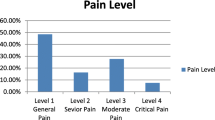Abstract
In traditional Chinese medicine (TCM) diagnosis, a patient may be associated with more than one syndrome tags, and its computer-aided diagnosis is a typical application in the domain of multi-label learning of high-dimensional data. It is common that a great deal of symptoms can occur in traditional Chinese medical diagnosis, which affects the modeling of diagnostic algorithm. Feature selection entails choosing the smallest feature subset of relevant symptoms, and maximizing the generalization performance of the model. At present there are rare researches on feature selection on multi-label data. A hybrid optimization technique is introduced to symptom selection for multi-label data in TCM diagnosis in this paper, and modeling is made by means of four multi-label learning algorithms like k nearest neighbors, etc. We compare the performance of the algorithm with the current popular dimension reduction algorithms like MEFS (embedded feature selection for multi-Label learning), MDDM (multi-label dimensionality reduction via dependence maximization) on the UCI Yeast gene functional data set and an inquiry diagnosis dataset of coronary heart disease (CHD). Experimental results show that the algorithm we present has significantly improved the performance. In particular, the improvement on the average precision for the classifier is up to 10.62% and 14.54%. Syndrome inquiry modeling of CHD in TCM is realized in this paper, providing effective reference for the diagnosis of CHD and analysis of other multi-label data.
Similar content being viewed by others
References
Tian L, Yan Y J, Zhu J G. Data mining techniques and their application in TCM study (in Chinese). Chinese J Basic Med Trad Chin Med, 2005, 11: 710–712
Tsousmakas G, Zhang M L, Zhou Z H. Learning from multi-label data. In: Tutorial at ECML/PKDD’09 Bled, Slovenia, 2009
Zhang Y, Zhou Z H. Multi-label dimensionality reduction via dependence maximization. ACM Trans Knowl Discov Data, 2010, 4(3): Article No. 14
Yu K, Yu S P, Tresp V. Multi-label informed latent semantic indexing. In: Proceedings of the 28th Annual International ACM SIGIR Conference on Research and Development in Information Retrieval. New York: ACM, 2005. 258–265
Ji S W, Ye J P. Linear dimensionality reduction for multi-label classification. In: Proceedings of the 21st International Conference on Artificial Intelligence, Pasadena, CA, 2009. 1077–1082
Guyon I, Elisseeff A. An introduction to variable and feature selection. J Mach Learn Res, 2003, 3: 1157–1182
Ge L, Li G Z, You M Y. Embedded feature selection for multi-label learning (in Chinese). J Nanjing Univ (Nat Sci), 2009, 45: 671–676
Moody J, Utans J. Principled architecture selection for neural networks: Application to corporate bond rating prediction. In: Moody J E, Hanson S J, Lippmann P R, eds. Neural Information Processing Systems 4. San Fransisco, CA: Morgan Kaufmann Publishers, Inc, 1992. 683–690
Zhang M L, Pena J M, Robles V, et al. Feature selection for multi-label naive Bayes classification. Inf Sci, 2009, 179: 3218–3229
Li G C, Li C T, Huang LP, et al. An investigation into regularity of syndrome classification for chronic atrophic gastritis based on structural equation model (in Chinese). J Nanjing Univ Trad Chin Med, 2006, 22: 217–220
Wang X W, Qu H B, Wang J. A quantitative diagnostic method based on data-mining approach in TCM (in Chinese). J Beijing Univ Trad Chin Med, 2005, 28: 4–7
Liu G P, Li G Z, Wang Y L, et al. Modeling of inquiry diagnosis for coronary heart disease in traditional Chinese medicine by using multi-label learning. BMC Complem Altern Med, 2010, 10: 37
Gheyas I A, Smith L S. Feature subset selection in large dimensionality domains. Patt Recogn, 2010, 43: 5–13
Blickle T, Thiele L. A comparison of selection schemes used in evolutionary algorithms. Evolut Comput, 1996, 4: 361–394
Motoki T. Calculating the expected loss of diversity of selection schemes. Evolut Comput, 2002, 10: 397–422
Sokolov A, Whitley D. Unbiased tournament selection. In: Proceedings of the 2005 Conference on Genetic and Evolutionary Computation. Washington DC: ACM, 2005. 1131–1138
Zhang M L, Zhou Z H. ML-KNN: A lazy learning approach to multi-label learning. Patt Recog, 2007, 40: 2038–2048
Zhang M L, Zhou Z H. Multilabel neural networks with applications to functional genomics and text categorization. IEEE Trans Knowl Data Eng, 2006, 18: 1338–1351
Elisseeff A, Weston J. A kernel method for multi-labelled classification. Adv Neur Inf Process Syst, 2002, 14: 681–687
Ronen M, Jacob Z. Using simulated annealing to optimize feature selection problem in marketing applications. Europ J Oper Res, 2006, 171: 842–858
Yang J, Honavar V. Feature subset selection using a genetic algorithm. IEEE Intell Syst Appl, 1998, 13: 44–49
Pudil P, Novovicov J, Kittler J, et al. Floating search methods in feature selection. Patt Recog Lett, 1994, 15: 1119–1125
Author information
Authors and Affiliations
Corresponding author
Rights and permissions
About this article
Cite this article
Shao, H., Li, G., Liu, G. et al. Symptom selection for multi-label data of inquiry diagnosis in traditional Chinese medicine. Sci. China Inf. Sci. 56, 1–13 (2013). https://doi.org/10.1007/s11432-011-4406-5
Received:
Accepted:
Published:
Issue Date:
DOI: https://doi.org/10.1007/s11432-011-4406-5




